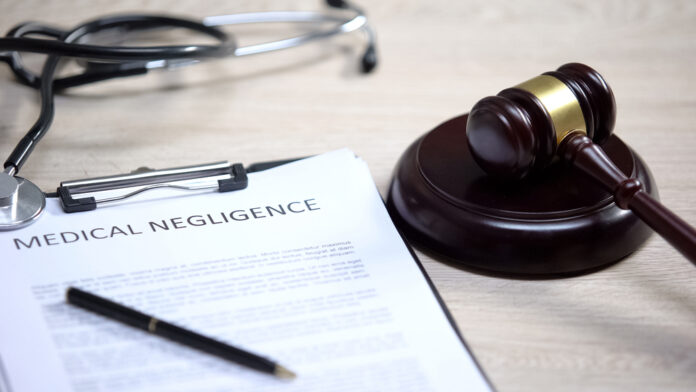Proving medical negligence can be a challenging and intricate process. This detailed guide will provide an understanding of the legal framework and practical tips for building a case in instances of suspected medical negligence.
Understanding Medical Negligence

Medical negligence, often referred to as medical malpractice, occurs when a healthcare provider deviates from the standard of care in the medical community, leading to patient harm. Comprehensive comprehension of this definition is crucial as it forms the bedrock of any case in this field, especially when seeking legal guidance from medical negligence solicitors.
The standard of care is a legal term that refers to the level and type of care an average, prudent healthcare professional in a similar field would provide under similar circumstances.
This standard is not uniform and can vary based on numerous factors, including the patient’s age, underlying health conditions, and the complexity of the medical issue.
Establishing the Standard of Care
The first step in proving medical negligence is establishing the standard of care that was applicable in your specific situation. This involves demonstrating what a competent healthcare professional would have reasonably done under similar circumstances.
Establishing this standard typically requires expert testimony from medical professionals in the same field as the defendant. These experts will draw upon their experience, medical literature, and current practices in the field to outline the expected standard of care.
Demonstrating a Breach of Standard of Care

Once the standard of care is established, the next step is to prove that the healthcare provider in question breached this standard. This breach could manifest in various forms, such as misdiagnosis, surgical errors, medication errors, or failure to inform the patient about the risks of a procedure.
Demonstrating a breach often hinges on expert testimony and medical records. It involves a detailed comparison of the defendant’s actions (or inactions) with the established standard of care.
Linking Breach to Harm
Proving a direct link between the breach of standard of care and the harm suffered is a critical component of a medical negligence case. This causation element requires showing that the provider’s deviation from the standard of care directly resulted in harm.
This harm could be physical, such as injury or worsening of a condition, or psychological, like trauma or stress. Medical records, expert testimony, and sometimes even forensic evidence play pivotal roles in establishing this causation.
Understanding Damages in Medical Negligence

Damages in medical negligence cases are typically categorized into compensatory and, in some cases, punitive damages. Compensatory damages are intended to reimburse the patient for the harm suffered, covering medical expenses, lost wages, pain and suffering, and other losses.
In rare cases, punitive damages might be awarded if the provider’s actions were particularly reckless or egregious. These are intended to punish the wrongdoer and deter similar conduct in the future.
Navigating the Legal Process
Navigating the legal process in a medical negligence case can be daunting. It involves several steps, including gathering evidence, filing a lawsuit, going through pre-trial motions and discovery, and possibly a trial.
It is essential to understand the specific procedures and deadlines in your jurisdiction, as these can vary. Hiring an attorney with experience in medical malpractice cases can be invaluable, as they can guide you through this complex process and help build a compelling case.
Gathering and Preserving Evidence
A successful medical negligence case often hinges on the quality and quantity of evidence presented. It is vital to gather all relevant medical records, including hospital records, doctor’s notes, test results, and prescriptions. These documents provide a factual basis for understanding what happened and how the healthcare provider’s actions deviated from the standard of care.
Additionally, personal records like diaries or pain journals can help illustrate the impact of the negligence on your daily life. Preserving this evidence is crucial, as records can sometimes get misplaced or altered.
Expert Witnesses: The Backbone of Your Case

Expert witnesses play a pivotal role in medical negligence cases. They help establish the standard of care, explain how the defendant breached that standard, and illustrate the connection between the breach and the harm suffered.
Selecting the right expert is critical – they must be well-respected in their field and have the ability to explain complex medical issues in a way that is understandable to a lay audience. Their testimony not only provides credibility to your claims but also helps the jury understand the nuances of medical practice.
Overcoming Defense Strategies
Be prepared to face various defense strategies. Common defenses include arguing that the harm was a known risk of the procedure, that the harm would have occurred regardless of the provider’s actions, or that the patient’s own actions contributed to their harm. Understanding these potential defenses and preparing counterarguments is essential.
This often involves demonstrating that the risks were not properly communicated to the patient or that the harm was directly a result of the provider’s deviation from the standard of care.
Statute of Limitations: Time is of the Essence
One of the first legal hurdles in a medical negligence case is the statute of limitations. This law sets the maximum time after an event within which legal proceedings may be initiated.
The specific time frame varies by jurisdiction and can be as short as one year or as long as several years from the date of the alleged negligence or from when the patient discovered or should have discovered the harm. Understanding and adhering to these time limits is crucial, as failing to file a lawsuit within this period typically results in losing the right to sue.
Settlement vs.Trial: Weighing Your Options

Many medical negligence cases are settled out of court. Settlements offer a quicker resolution and can reduce the emotional and financial burden of a trial. However, if a fair settlement is not offered, taking the case to trial may be necessary.
Deciding whether to settle or go to trial requires careful consideration of the strength of your case, the amount of damages you are seeking, and your personal circumstances. An experienced attorney can provide guidance on the best course of action.
Conclusion
Proving medical negligence is a complex and demanding process that requires a thorough understanding of legal and medical principles, meticulous preparation, and often the support of skilled legal and medical professionals.
While the journey can be challenging, achieving a successful outcome can provide not only financial compensation but also a sense of justice and closure. As with any legal matter, individual circumstances vary greatly, so it is advisable to seek professional legal advice tailored to your specific situation.









